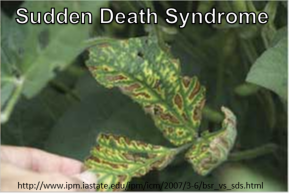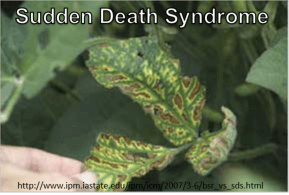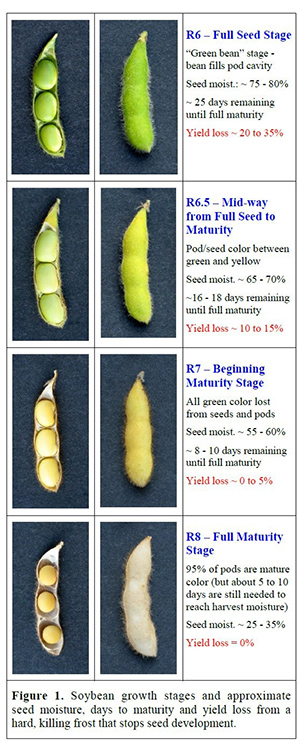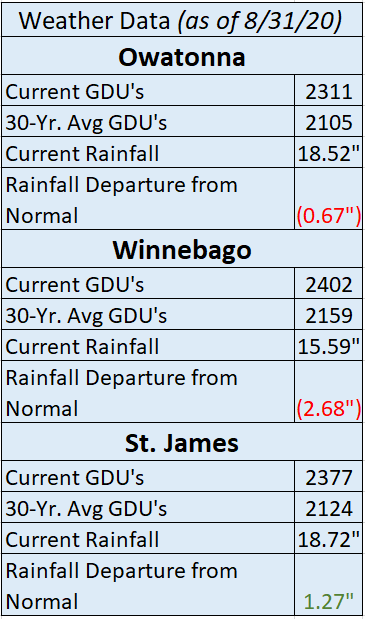The cool and early start to soybean planting this year was favorable for yield, but Sudden Death Syndrome in soybeans has been showing up the last few weeks. Even though it is spotty, it is an important disease to keep in mind when thinking about your soybean crop 2 years from now. The fungus Fusarium virguliforme causes SDS, and presents itself with interveinal chlorosis and eventually necrosis while the veins stay green. As the disease gets worse, plants often drop their leaves with the petioles still attached. SDS can be easily confused with Brown Stem Rot as the foliar symptoms are very similar.
The fusarium fungus that causes SDS does overwinter in the crop residue and soil, and can carry over through the rotation to infect the next soybean crop. SDS infects soybean roots early in the season, even though the foliar symptoms are shown later in the year. Infection of SDS is often worse with cool and wet soil conditions at planting, early planting dates, and higher levels of compaction increase the risk of SDS.
There is no soybean variety that is completely resistance to SDS, but the best management strategy is to plant the most resistance soybean variety available! Spraying a foliar fungicide is not effective in control, but using a seed treatment like Ilevo or Saltro have shown the ability to reduce SDS severity and protect yield.
More attention has been on the relationship between Soybean Cyst Nematode (SCN) and SDS. It has been studied for years with inconsistent results. Some studies have shown positive associations, where more severe SDS symptoms occur when SCN is present, while other studies report weak or no association between SDS symptom development in the presence of SCN. Part of the theory is that root damage caused by SCN makes the plants more vulnerable to SDS infection. Effective SCN management has the potential to reduce some SDS symptoms.
 |




